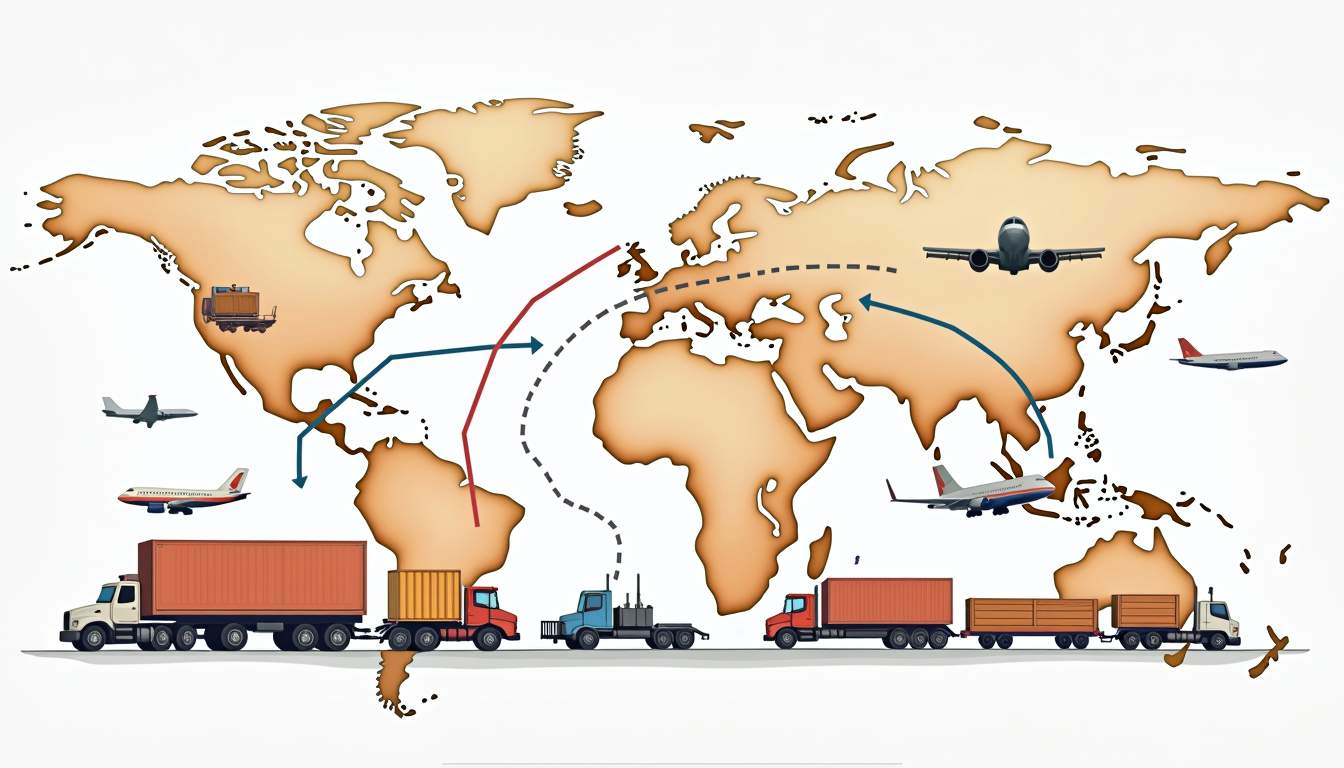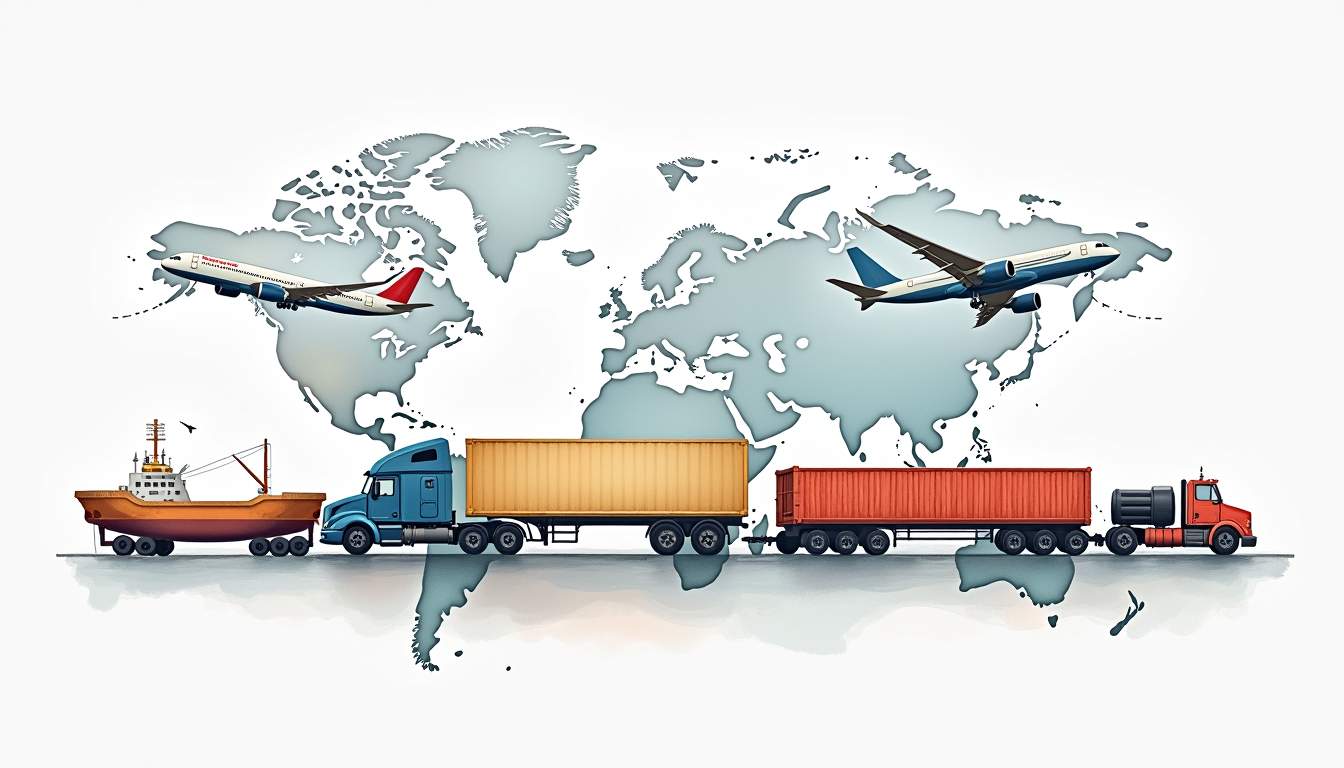Freight transport is a vital component of global trade, enabling the movement of goods across vast distances. With various methods available, businesses must carefully evaluate their options to ensure efficiency, cost-effectiveness, and reliability. This article delves into the factors influencing freight transport decisions and provides an overview of the advantages and disadvantages of different freight types.
Cargo and Route Factors in Freight Transport
When considering freight transport, cargo and route factors play a crucial role in determining the most suitable method. The nature of the cargo, including its size, weight, and fragility, can significantly influence the choice of transport. For instance, perishable goods may require faster delivery options, while heavy machinery might necessitate specialized handling. Additionally, the packaging and storage requirements of the cargo can also affect transport decisions. Goods that are sensitive to temperature, humidity, or physical shock often need climate-controlled environments or cushioned packaging to ensure they arrive at their destination in optimal condition.

Route factors also come into play, as the distance, terrain, and infrastructure can affect transit times and costs. Urban areas may present challenges such as traffic congestion and limited access points, while rural routes might lack the necessary facilities for efficient loading and unloading. Furthermore, seasonal weather conditions can impact route viability; for example, heavy snowfall or flooding can hinder transport in certain regions during specific times of the year. Understanding these factors is essential for businesses to make informed decisions regarding their freight transport needs, as they can directly influence delivery schedules and overall logistics efficiency.
Key Considerations for Freight Selection
Several key considerations should guide the selection of freight transport methods. First and foremost, cost is a significant factor; businesses must balance their budgetary constraints with the need for timely delivery. Additionally, reliability is paramount; choosing a freight method with a proven track record can mitigate risks associated with delays or damage. The availability of tracking systems and real-time updates can also enhance reliability, offering businesses peace of mind as they monitor their shipments throughout the transport process.
Another important aspect is the environmental impact. As sustainability becomes increasingly important, many companies are looking for transport options that minimize their carbon footprint. This can influence the choice between modes, as some are inherently more eco-friendly than others. For instance, rail transport is often considered more sustainable than road transport due to its higher fuel efficiency and lower emissions per ton-mile. Finally, the complexity of the supply chain should also be considered; businesses with multiple touchpoints may benefit from integrated solutions that streamline logistics, such as using a single provider for both transportation and warehousing, thus reducing the need for multiple handoffs and potential delays.
Impact of Cargo Characteristics on Transport
The characteristics of the cargo itself can significantly impact transport choices. For example, hazardous materials require specialized handling and transport methods to ensure safety and compliance with regulations. Similarly, oversized or heavy items may necessitate specific vehicles or routes that can accommodate their dimensions. It is also important to consider the loading and unloading requirements; some cargo types may need cranes or forklifts, which can influence the selection of transport providers based on their equipment and capabilities.
Moreover, the value of the cargo can dictate the level of service required. High-value items may warrant enhanced security measures and faster delivery options, while lower-value goods might be more cost-effective to ship via slower methods. Additionally, the potential for damage or loss during transit can vary greatly among different types of cargo. Fragile items may require extra precautions, such as additional cushioning or careful handling protocols, to minimize the risk of breakage. Understanding these nuances is critical for businesses aiming to optimize their freight transport strategies, as they can lead to more effective planning and execution of logistics operations.
Overview of Freight Types: Pros and Cons
There are several types of freight transport, each with its unique advantages and disadvantages. Understanding these can help businesses choose the most appropriate method for their specific needs. Below is an overview of the most common freight types: road, rail, air, and sea.

Advantages of Road Freight
Road freight is one of the most widely used methods for transporting goods. Its primary advantage lies in its flexibility; trucks can reach remote locations and navigate urban areas with ease. This makes road transport ideal for last-mile delivery, connecting warehouses to retail outlets or customers directly.
Additionally, road freight offers relatively quick transit times for short to medium distances. With a well-developed network of roads, businesses can often achieve timely deliveries without the need for complex logistics. Furthermore, road transport is suitable for a wide range of cargo types, from perishable goods to heavy machinery.
Disadvantages of Road Freight
Despite its advantages, road freight also has some drawbacks. Traffic congestion can lead to delays, especially in urban areas, which may impact delivery schedules. Additionally, road transport is subject to weather conditions, which can affect safety and transit times.
Moreover, the environmental impact of road freight is a growing concern. Trucks are significant contributors to greenhouse gas emissions, prompting many companies to seek more sustainable alternatives. Finally, costs can escalate due to fuel prices and tolls, making it essential for businesses to carefully evaluate their road freight options.
Benefits of Rail Freight
Rail freight is often praised for its efficiency and cost-effectiveness, particularly for long-distance transport. Trains can carry large volumes of goods at once, making them an economical choice for bulk shipments. This method is especially beneficial for industries such as agriculture and mining, where large quantities of raw materials need to be transported.
Another advantage of rail freight is its lower environmental impact compared to road transport. Trains produce fewer emissions per ton-mile, making them a more sustainable option for businesses looking to reduce their carbon footprint. Additionally, rail networks are less susceptible to traffic congestion, allowing for more reliable transit times.
Limitations of Rail Freight
However, rail freight is not without its limitations. One significant drawback is the lack of flexibility; trains operate on fixed routes and schedules, which may not align with the specific needs of all businesses. This can result in longer lead times for deliveries, particularly for last-mile transport.
Moreover, rail freight requires additional logistics for loading and unloading, which can complicate the supply chain. Businesses must coordinate with multiple parties, including rail operators and trucking companies, to ensure seamless transport. Finally, the infrastructure for rail transport may not be as developed in certain regions, limiting accessibility.
Advantages of Air Freight
Air freight is renowned for its speed, making it the preferred choice for time-sensitive shipments. Businesses can rely on air transport to deliver goods quickly, often within a day or two, which is invaluable for industries such as e-commerce and pharmaceuticals.
Additionally, air freight is suitable for high-value or fragile items that require special handling. The controlled environment of an aircraft minimizes the risk of damage during transit, ensuring that goods arrive in optimal condition. Furthermore, air freight can reach remote locations that may be difficult to access via other transport methods.
Disadvantages of Air Freight
Despite its advantages, air freight comes with significant costs. It is generally the most expensive transport option, which can be prohibitive for businesses with tight budgets. Additionally, the capacity for air freight is limited compared to other methods, making it less suitable for bulk shipments.
Moreover, air transport is subject to strict regulations and security measures, which can add complexity to the shipping process. Delays due to weather or air traffic can also impact delivery times, undermining the speed advantage that air freight typically offers.
Sea Freight Benefits
Sea freight is a popular choice for transporting large volumes of goods internationally. One of its primary benefits is cost-effectiveness; shipping by sea is generally cheaper than air freight, making it an attractive option for businesses looking to minimize transportation expenses.
Additionally, sea freight can accommodate a wide variety of cargo types, including bulk commodities, containers, and oversized items. The capacity of cargo ships allows for the transport of significant quantities, making it ideal for businesses involved in import and export activities.
Sea Freight Challenges
However, sea freight also presents challenges. The most notable drawback is the longer transit times compared to other methods. Shipping by sea can take several weeks, which may not be suitable for time-sensitive shipments. This delay can impact inventory management and customer satisfaction.
Furthermore, sea freight is subject to various regulations and customs processes, which can complicate the shipping experience. Businesses must be prepared to navigate these complexities, ensuring compliance with international trade laws. Additionally, adverse weather conditions can affect shipping schedules, leading to potential delays.
Final Thoughts on Freight Transport Choices
Choosing the right freight transport method is a critical decision that can significantly impact a business’s operations and bottom line. Each type of freight—road, rail, air, and sea—offers distinct advantages and disadvantages that must be carefully weighed against the specific needs of the cargo and the overall logistics strategy.

Ultimately, businesses should consider factors such as cost, speed, reliability, and environmental impact when making their selection. By understanding the nuances of each freight type and aligning them with their operational goals, companies can enhance their logistics efficiency and ensure successful delivery of their goods.
As the landscape of freight transport continues to evolve, staying informed about emerging trends and technologies will be essential for businesses looking to optimize their supply chains. Whether through innovative solutions or sustainable practices, the future of freight transport holds exciting possibilities for those willing to adapt and embrace change.
Discover Fast and Reliable Air Freight with Freighter Gator
As you consider the freight transport options that align with your business’s needs for speed and reliability, Freighter Gator stands ready to elevate your logistics strategy. Specializing in fast, flexible air cargo charter solutions, we are committed to delivering your time-critical freight with precision and care. From emergency automotive parts to oversized equipment, our global air freight services ensure your cargo arrives on time, every time. Enhance your supply chain’s efficiency with Freighter Gator’s trusted air freight solutions. Request a Quote today and experience the peace of mind that comes with expertly handled shipments.
